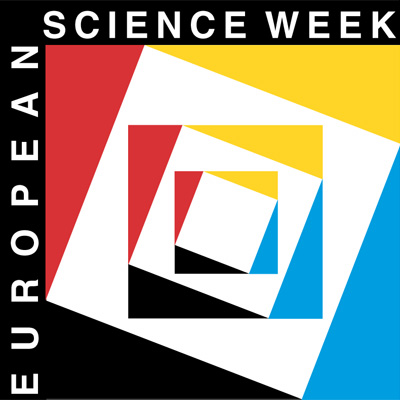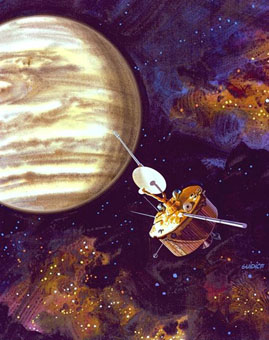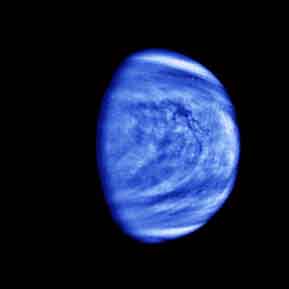

The Venus Transit 2004
... Brief InfoSheet D7
The mysterious clouds of Venus
One of the reasons why Venus looks like a jewel in the sky is that this sister planet of the Earth is covered by a dense cloudy atmosphere. No less than two-thirds of the infalling sunlight is reflected by these clouds and Venus is therefore - following the Sun and the Moon - the third-brigthest object in the sky.
But this cloudy shell also makes it completely impossible to view the planet's surface features through optical telescopes. In the early years of telescopic observation, scientists believed that the clouds were of water - like the clouds in the Earth's atmosphere - and so they came to the conclusion that the conditions on Venus' surface might be similar to the conditions which prevailed on Earth many millions of years ago in the Triassic, Jurassic and Cretaceous geological periods.

Venus' atmosphere seen by NASA's PIONEER VENUS
Today we know that the atmosphere of Venus differs remarkably from ours. Unlike the Earth's atmosphere, which is mainly composed of nitrogen (78%) and oxygen (21%), Venus' atmosphere contains about 96% carbon dioxide, 3% nitrogen, some argon and traces of water vapour (varying from 0.1 to 0.4%), oxygen, hydrogen chloride, hydrogen fluoride, hydrogen sulphide, sulphur dioxide, and carbon monoxide.
The surface pressure of Venus' atmosphere is about 90 times greater than the Earth's and the surface temperature is about 500°C. These extreme conditions are due to a s-called "run-away greenhouse effect" .
The carbon dioxide in Venus' atmosphere is transparent to the light and heat coming from the Sun but it is opaque to the infrared radiation from the hot surface of the planet. Less than half the infrared radiation is released back into space and the result is to raise the temperature of the planet by about 500°:C. Compare this with the Earth, where the greenhouse effect raises the temperature by only 30°C!
Venus is covered with clouds of sulphuric acid, rather than the water vapour clouds found on the Earth. The clouds orbit the planet in only four days. Winds also blow from the equator to the poles in large cyclones 100 to 500 km across. They culminate in two giant vortices that cap the polar regions.

Structure of the clouds in the atmosphere of Venus
The atmosphere appears to be relatively clear below the lower cloud deck that is located about 45 km above the surface. The peaks of the yellowish-white clouds reach about 70 km above the surface - for comparison, the highest clouds above the Earth reach only altitudes of about 16 km.
Venus has much less water than the Earth. If all the Earth's water (both in the atmosphere and in the oceans) were spread in a uniform layer over our planet's surface, that sheet would be about 3 km thick. but all the water in the Venusian atmosphere (none exists on the surface now because it is so hot) would amount to a layer only 30 cm thick!
Want to know more?
This topic is discussed in a more detailed way in the associated Extended InfoSheet.
Back to the List of Brief InfoSheets.
